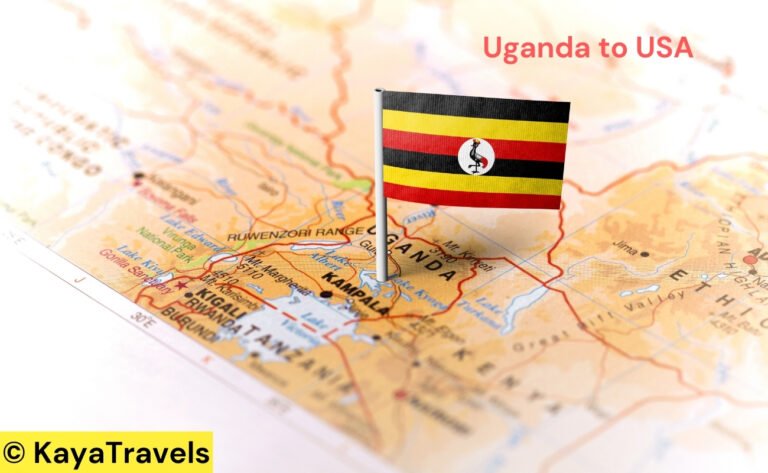Travelling to Uganda offers an opportunity to explore a world of diverse wildlife and landscapes, but timing your visit right is crucial. The best time to visit Uganda is during its two dry seasons: June to August and December to February.
These periods provide the most pleasant weather for wildlife safaris, gorilla tracking, and enjoying the country’s national parks.
During these dry months, the skies are clearer, the risk of malaria is lower, and animals tend to gather around water sources, making them easier to spot.
Although the dry seasons are ideal for tourists, it’s advisable to book your trip well in advance, as this is also when tourist numbers peak, particularly for gorilla trekking, which requires limited permits.
While Uganda can be visited year-round, the wet seasons, from March to May and September to November, bring heavy rains that can make certain activities challenging. Roads and trails may be slippery, and some remote areas can become inaccessible.
If you’re seeking a more solitary experience or are interested in birdwatching, the wet seasons could still be appealing as the scenery is lush and numerous bird species exist.
Understanding Uganda’s Climate
Uganda’s climate, characterized by two distinct rainy seasons and corresponding dry periods, is pivotal in determining the best time for travel and activities.
Seasonal Overview
Rainy Seasons: You’ll encounter rain from March to May and again from September to December. It’s essential to align your travel plans with these patterns because outdoor activities can be affected.
Dry Seasons: Prefer to avoid the rain? June to August and December to February are typically dry, offering ideal wildlife viewing and trekking conditions.
Temperatures and Humidity
- Temperature Range: Despite a year-round warm climate, Uganda experiences its hottest months in January and February, with temperatures reaching the upper 80s to lower 90s Fahrenheit. On the cooler side, June and July see temperatures in the low 80s Fahrenheit.
- Nighttime Temperatures: After sunset, expect temperatures to hover in the lower 60s Fahrenheit no matter the month.
Humidity Levels: The humidity level in Uganda can vary depending on the region and season. During the rainy seasons, expect higher humidity, which can add a layer of challenge to your adventures.
In planning your visit, remember that Uganda’s climate, with its rainy seasons and mildly fluctuating temperatures, is a tropical balance of sun and showers that shouldn’t be underestimated.
Wildlife and Safari Timing
Timing is critical when planning your trip to Uganda for a memorable wildlife adventure. You’ll want to aim for the peak viewing seasons to maximize your experience.
Best Months for Wildlife Viewing
The ideal time for wildlife viewing in Uganda’s national parks, like Queen Elizabeth National Park and Murchison Falls, is during the dry seasons from June to August and December to February. These months offer the clearest conditions for spotting many animals, including the famous Big Five.
- June to August: Animals are easier to see because they congregate around water sources.
- December to February: The shorter vegetation makes wildlife easier to spot.
Gorilla Trekking Seasons
For those keen on gorilla trekking, it’s vital to consider the best months for this activity. Although it’s possible to trek year-round, the best experiences are during the dry seasons.
- June to August: Fewer rains mean easier hiking conditions and more apparent paths through Bwindi Impenetrable National Park, where many mountain gorillas live.
- December to February: Besides good trekking conditions, it’s generally warmer, making it a more comfortable experience.
Remember, only a limited number of trekking permits are issued each day, so it’s wise to book them well in advance to ensure your spot. Trekking to see these magnificent creatures can be challenging, but your experience will be unforgettable with the right timing.
Cultural and Recreational Activities
When you visit Uganda, you’re stepping into a vibrant tapestry of cultural festivals and a playground of outdoor adventures waiting to be explored.
Festivals and Cultural Events
Uganda boasts a rich cultural heritage with numerous festivals and events. The capital city, Kampala, invites you to experience the colorful Ndere Centre, where every Wednesday and Friday, you can witness traditional dance performances. As you immerse yourself in the beat of the drums and the rhythmic dances, you capture the essence of Ugandan culture.
Outdoor and Recreational Adventures
The heart of recreation in Uganda pulses with life. Jinja, known as East Africa’s adventure capital, offers you white-water rafting on the Nile, while Lake Victoria, the continent’s largest lake, beckons for tranquil boat trips. The outdoor enthusiast will find plenty of activities, from bungee jumping in Jinja to serene evenings by the majestic lake, all within reach of the bustling urban life of Kampala.
Logistical Considerations for Travelers
Before embarking on your journey to Uganda, it is essential to understand the logistical aspects, such as where you’ll stay and how you’ll move around. These details can significantly impact your overall travel experience.
Accommodation Options
When looking for a place to stay in Uganda, your options range from luxury lodges to budget accommodations. Lodges are standard in national parks and are a good option for wildlife enthusiasts. For those holding a Gorilla Permit, lodges near Bwindi Impenetrable Forest offer convenient access for gorilla trekking. Accommodations in cities like Kampala cater to different budgets as well.
- Luxury: Enjoy upscale amenities and services.
- Mid-range: Comfortable without breaking the bank.
- Budget: Basic facilities at a lower cost.
Transportation and Accessibility
Getting around Uganda mainly involves road travel. The roads vary from well-paved highways to challenging dirt tracks, especially en route to remote national parks.
- Self-drive: Rent a 4×4 for flexibility to explore.
- Public Buses: Connect significant towns but may not reach remote areas.
- Boda-bodas (Motorbike Taxis): For short distances within towns.
- Private Taxis: Book through your accommodation for safety.
- Domestic Flights: Quick transfers to significant tourist destinations.
Remember, you may need to secure a permit in advance to visit certain areas, especially for gorilla trekking. Allowing extra time in your budget for transportation is wise due to variable road conditions and distances between attractions.
Month-by-Month Travel Guide
When planning a visit to Uganda, it’s crucial to consider the weather patterns and tourist seasons to get the most out of your trip. Below is a guide to help you decide when to go.
Peak Tourist Seasons
June to August: This is the best time to travel to Uganda if you’re looking to enjoy safari and wildlife spotting. It’s the dry season, making it perfect for trekking and observing animals. Due to the favourable weather, these months mark the high season for tourists, especially for gorilla trekking, a must-do experience in Uganda.
December to February: Another popular time for visitors due to the dry weather, which is ideal for watching wildlife and experiencing Uganda’s parks. The Christmas holidays also increase tourist numbers, so book your accommodation and tours early.
Off-Peak and Shoulder Seasons
January and February: Still considered part of the high season, these months experience some of the hottest temperatures. However, the crowds might thin out as the holiday period ends.
March to May; October to November: These are rainy months with heavier rainfall, making travel more challenging. However, this is the low season, meaning fewer tourists and potential discounts on travel and accommodation. The landscape is lush and green, and a fantastic bird-watching time.
September: As a shoulder month, September can offer a balance between the dry and wet seasons and fewer tourists, making it an excellent time for those looking to avoid the peak season rush.
Uganda’s weather varies month by month, so choose your travel period based on what you want to see and do. Planning your trip around the best time and considering the high and low seasons will ensure a memorable Ugandan adventure.

